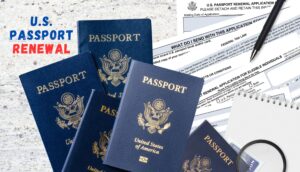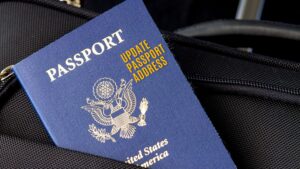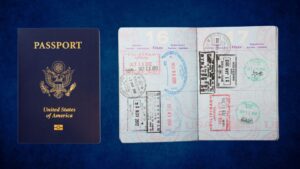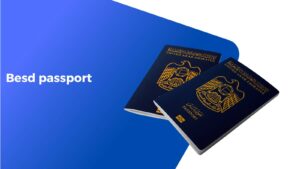Puerto Rico is one of the most popular destinations in the Caribbean. Known for its beautiful beaches, historic Old San Juan, and lush rainforests like El Yunque, it attracts millions of visitors every year. Since Puerto Rico is a U.S. territory, many travelers are often confused about the entry requirements. One of the most frequently asked questions is: do you need a passport to go to Puerto Rico?
For U.S. citizens, traveling to Puerto Rico is considered the same as traveling between two states. They can board flights with just a driver’s license or state-issued ID. For non-U.S. citizens, the rules are quite different. Entry requirements are tied to U.S. federal immigration laws, which means international visitors are subject to the same regulations as they would be when entering the mainland United States.
Do You Need a Passport to Go to Puerto Rico if You Are a Non-U.S. Citizen?
If you are a non-U.S. citizen, the answer is yes — you need a passport to go to Puerto Rico. This applies whether you are flying directly into Puerto Rico from abroad or traveling from another U.S. state. The key difference is that immigration authorities will treat you the same way as if you were entering the United States itself.
For example, a traveler from India, Nigeria, or Argentina cannot simply present a national ID or travel permit. Airlines will require a valid passport before allowing you to board the plane. In addition, when you arrive in Puerto Rico, immigration officers may ask to see your passport, visa, or ESTA authorization. This is because Puerto Rico follows U.S. Customs and Border Protection (CBP) rules.
Even if you already live in the U.S. on a student or work visa, you still need to carry your passport along with your visa documents when traveling to Puerto Rico. A passport is the only universally accepted identification for foreign nationals.
Visa Requirements for Non-U.S. Citizens Traveling to Puerto Rico
A passport alone is not enough for most travelers — many also need a visa or travel authorization to enter Puerto Rico. Let’s break down the main categories:
Tourist Visa (B-2): Travelers from countries not covered by special programs must apply for a U.S. B-2 visitor visa. This process usually involves filling out a DS-160 application form, paying a visa fee, and attending an interview at the U.S. embassy or consulate in your home country.
Applicants are typically asked to show proof of income, ties to their home country, and a travel itinerary. Once approved, the visa allows you to visit Puerto Rico for up to six months.
Visa Waiver Program (VWP): Over 40 countries, including the UK, Germany, France, Japan, and Australia, are part of the Visa Waiver Program. Travelers from these nations can visit Puerto Rico without a visa for stays of up to 90 days. They must apply for ESTA (Electronic System for Travel Authorization) approval before departure.
ESTA Authorization: ESTA is an online application system where travelers provide passport details, travel information, and answer security questions. Approval usually comes within minutes, but it is recommended to apply at least 72 hours before departure. ESTA is valid for two years, allowing multiple short trips to Puerto Rico and other U.S. territories.
Failing to secure the correct visa or ESTA can result in denied boarding at the airport or refusal of entry upon arrival. That’s why it’s important for non-U.S. citizens to confirm the requirements well before their travel date.
Exceptions and Special Cases
Not all travelers fall under the same requirements. Some categories of non-U.S. citizens may experience exceptions or slightly relaxed entry rules:
- Green Card Holders (Permanent Residents): If you are a permanent U.S. resident, you do not need a visa to travel to Puerto Rico. However, you must still carry your Green Card and a valid passport from your home country. This ensures proof of identity and legal status in case you are asked by immigration or airline officials.
- Visa-Exempt Countries: Citizens of Canada and Bermuda enjoy special exemptions under U.S. law. They do not require a visa for short visits, but they must still present a valid passport to enter Puerto Rico.
- Students and Temporary Workers: Those studying or working in the U.S. under F-1, H-1B, or other visas can travel to Puerto Rico, but they need to carry not just their passports, but also supporting documents like Form I-20 (for students) or I-797 approval notices (for workers). These documents prove that their U.S. immigration status is valid.
Although these categories may simplify the travel process, every non-U.S. citizen must still carry a valid passport when traveling to Puerto Rico.
Entry Requirements Beyond a Passport
In many cases, immigration officials or airlines may ask for additional documents beyond your passport. Being prepared with these documents can help you avoid delays or extra questioning:
- Return or onward tickets: Proof that you plan to leave Puerto Rico within the allowed time is often required. For example, a return flight to your home country or onward travel to another destination.
- Proof of financial resources: Immigration authorities may ask for bank statements, proof of employment, or credit cards to ensure you can support yourself during your stay.
- Supporting purpose documents: If you are visiting for business, a letter of invitation from the company in Puerto Rico may be necessary. Students may need to show enrollment confirmation, while tourists can simply show hotel bookings.
Having these documents ready is not always mandatory, but it is highly recommended since border authorities have the right to ask for them at any time.
What Happens If You Travel Without a Passport?
Traveling without a passport as a non-U.S. citizen can create serious problems. Here’s what can happen:
- Airline denial: Airlines usually conduct their own checks before boarding. If you cannot provide a passport and visa (if required), they will deny you entry on the flight.
- Immigration refusal: Even if you somehow board the plane, U.S. immigration officials in Puerto Rico can deny you entry and send you back immediately.
- Future consequences: Attempting to enter Puerto Rico without the right documents can also impact your future visa applications. Authorities may flag your record, leading to stricter background checks or even visa rejections in the future.
This is why it is never advisable to take the risk of traveling without a passport as a non-U.S. citizen.
Tips for Smooth Travel to Puerto Rico as a Non-U.S. Citizen
Traveling internationally always requires preparation, and Puerto Rico is no exception. Here are some tips to make your journey hassle-free:
Apply early for visas or ESTA: Some visas take weeks or months to process, so it’s always best to apply well ahead of your trip. Even ESTA, while fast, should not be left until the last minute.
Check your passport validity: Many countries require at least six months of passport validity beyond your stay. For example, if your passport expires in two months, you may not be allowed to travel.
Carry both physical and digital copies: Store extra copies of your passport, visa, ESTA, and travel itinerary. Keeping them on your phone or email makes it easier if documents are lost.
Know customs regulations: Since Puerto Rico follows U.S. customs laws, you must comply with restrictions on food, plants, and certain goods. Research what you can and cannot bring to avoid confiscation or fines.
Book accommodation in advance: Immigration officers may ask where you will be staying. Having hotel confirmations or a host’s address ready shows that your travel plans are genuine.
Preparation is the key to a smooth travel experience. By following these steps, you can focus on enjoying Puerto Rico’s culture, cuisine, and natural beauty without unnecessary stress.
FAQs
1. Do you need a passport to go to Puerto Rico if you are a non-U.S. citizen?
Yes, non-U.S. citizens must carry a valid passport to travel to Puerto Rico. Unlike U.S. citizens, who can use a driver’s license, international travelers are subject to U.S. immigration laws.
2. Do U.S. citizens need a passport to go to Puerto Rico?
No, U.S. citizens do not need a passport. They can travel with just a government-issued photo ID, such as a driver’s license, since Puerto Rico is a U.S. territory.
3. Do children need a passport to go to Puerto Rico?
Yes, if the children are non-U.S. citizens, they must have a valid passport. U.S. citizen children can travel with only a birth certificate or state-issued ID.
4. Do Green Card holders need a passport to go to Puerto Rico?
Green Card holders do not need a visa to enter Puerto Rico, but they must carry both their Green Card and a valid passport from their home country for identification.
5. Do you need a passport to go to Puerto Rico if you are from Canada?
Yes, Canadian citizens must present a valid passport. They are generally visa-exempt for short visits, but a passport is still mandatory to board flights and enter Puerto Rico.
6. Do you need a passport to go to Puerto Rico if you are from a Visa Waiver Program country?\
Yes, a passport is required, but you do not need a visa if you qualify under the Visa Waiver Program. However, you must apply for ESTA authorization before traveling.
7. What happens if you travel to Puerto Rico without a passport as a non-U.S. citizen?
You will likely be denied boarding by the airline or refused entry upon arrival. Immigration authorities may also record the incident, which could impact future visa applications.
8. Do you need a visa as well as a passport to go to Puerto Rico?
Yes, in most cases non-U.S. citizens need both a passport and a visa (B-2 tourist visa). However, travelers from Visa Waiver Program countries can enter with just a passport and ESTA approval.
9. Do you need a passport to go to Puerto Rico if you already live in the U.S. on a visa?
Yes, you must still carry your passport along with your U.S. visa documents (such as an F-1 student visa or H-1B work visa). A passport is required to prove identity and immigration status.
10. Do airlines always check if you need a passport to go to Puerto Rico?
Yes, airlines conduct document checks before boarding. If you are a non-U.S. citizen, they will require you to show your passport (and visa or ESTA, if applicable) before letting you board.






